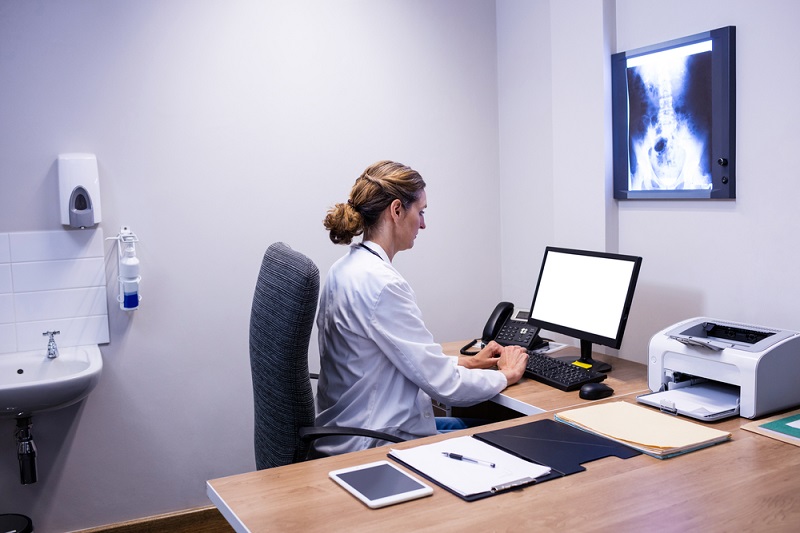Why The Healthcare Sector Needs Printers More Than Ever
Printers are important to healthcare organisations because correct labelling is essential for quality patient care, and safe practices. Modern print technology needs to be fast and visually reliable, so details are clear during a crisis.
Uses for printing in the healthcare industry include but are not limited to:
- Employee Identification
- Patient Identification
- Labels for Medication and Supplies
- Tags for Samples and Specimens
- Labels for Equipment
- Labels for Results
- Documentation for Patient Records
- Documentation for Tests and Results
When choosing a commercial printer suited to the needs of the healthcare sector, many are faced with a choice between thermal printers and laser printers. Here we outline key differences between the two technologies.
Thermal Printers
A number of printer brands have thermal models designed to function as a medical device label printer. Handheld portable thermal printers can be carried by staff, making on-the-spot labelling highly efficient.
Thermal printing requires fewer moving parts than laser printing, hence the more compact designs. Smaller versions are suited to areas with space restrictions, and single label printing options also make for minimal waste.
Cost-positive benefits include less operational stock as common thermal printing does not require toner, ribbon, or ink. Thermal printing is usually smudge resistant. Quality black and white printing results in clear barcodes that scan cleanly.
Specialty labelling materials generally suited to thermal printing can span durable, waterproof, temperature resistant, and UV resistant synthetic substances. Certain models print directly onto wristbands.
Either direct thermal technology or thermal transfer models are available. Thermal transfer is considered high end quality across a variety of substances, while direct thermal labels are great for short term use.
Thermal printers are notably faster than laser printers. The main issue is limited colour printing, and the cost of thermal transfer ribbons if you opt for thermal transfer printing technology.
Laser Printers
Laser printers are primarily used for, but not limited to documentation purposes. Laser printer equipment is more often designed to print in sheets rather than small, singular labels.
As a result, your office or organisation could waste paper printing single labels. On the flip side, laser printers are commonly used for large amounts of patient paperwork, and sometimes sheets of multiple labels.
Laser printers are likely to be bigger than many thermal printers, thereby taking up more office space. In terms of operational costs, they also require ink, toner, and ribbon replacements.
While they produce more colours, laser printers can run into issues with adhesive labels. Melting in the machine could cause operational problems and lead to increased maintenance. Special care is required.
What are your printing priorities?
In today’s world those in caring professions are inundated with data. While laser printing suits physical filing and records on hand, the portability of thermal printers could suit labelling needs for professionals on the move.
You Can Also Read:- How To Choose A Printer For Small Business
At Printcom we have decades of experience providing printer services for Perth for different facets of the healthcare industry, from medical offices and hospitals, suppliers and test facilities, to care homes, and pharmacies.
A consultation could help verify pressing areas of printing concern, and the cost-efficient path forward for your organisation. We understand that reliability is of paramount concern to you, your team, and those in your care.

